

Ben Zachariah
CarExpert's top five EV reviews of 2025
24 Minutes Ago
The Tesla Model 3 has been tweaked for 2021, with more range and fresh trim options for the interior. It's arguably the best electric car on sale in Australia.

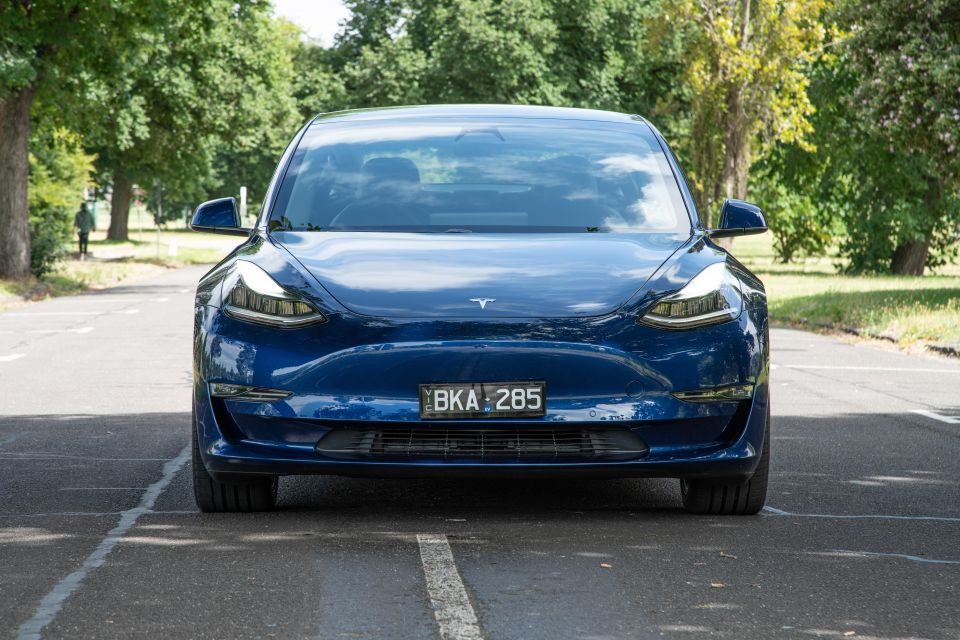

Contributor
New from
$67,900
excl. on-roads

Contributor
New from
$67,900
excl. on-roads


Contributor
New from
$67,900
excl. on-roads

Contributor
New from
$67,900
excl. on-roads
Quickly see how this car stacks up against its competition. Select any benchmark to see more details.
Where expert car reviews meet expert car buying – CarExpert gives you trusted advice, personalised service and real savings on your next new car.
There’s plenty of electric cars coming to Australia in the next 12 months, and there are plenty already here.
But there’s only one Tesla Model 3. Elon Musk’s startup cut its teeth with the Roadster and refined its formula with the Model S, but it was always working towards a bigger goal, the goal of creating a more affordable electric car to bring zero local emissions motoring to the masses.
Okay, at $81,900 before on-road costs the Model 3 Long Range on test here isn’t what you’d call cheap. What it is, though, is a credible rival to the BMW 3 Series and Mercedes-Benz C-Class.
It’s also been treated to an update for 2021 with more range, more interior storage, and a more affordable price tag. Has Tesla improved on what was already the best-selling electric vehicle in Australia?

Pricing for the Model 3 kicks off at $66,900 before on-road costs for the Standard Range Plus RWD, before jumping to $81,900 before on-road costs for the Long Range AWD on test here.
The range-topping Model 3 Performance AWD is listed at $90,900 before on-road costs.
The Long Range AWD is right in the same price bracket as the BMW 330i ($77,900) and Mercedes-Benz C300 ($74,700) if you look at pure petrol power, and undercuts the plug-in hybrid 330e ($84,900) and C300e ($84,000).
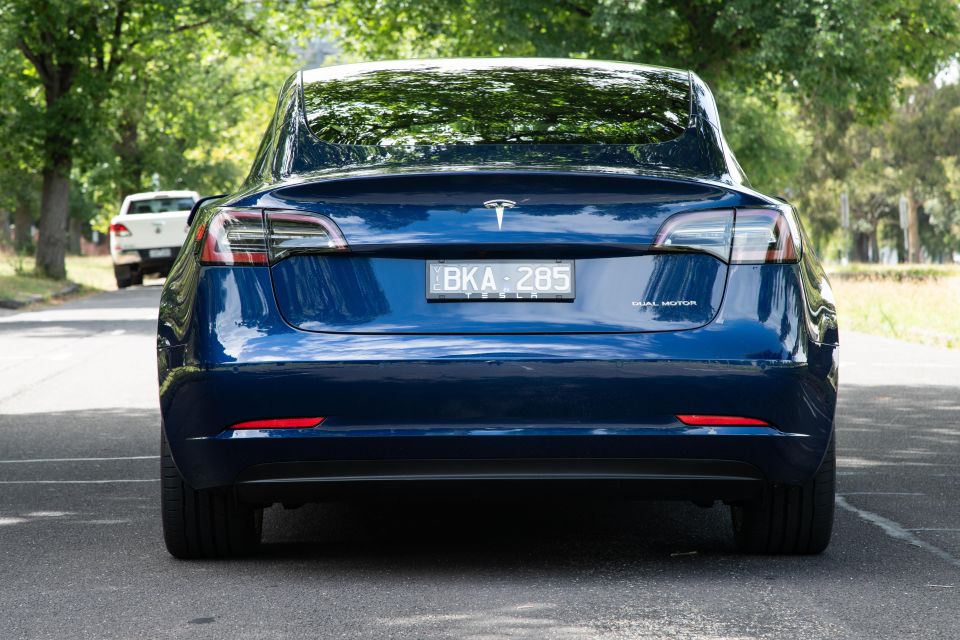
Buy your new car without the stress. It's fast, simple and completely free.

Great service from Travis and team, second time I have used this business would not hesitate to recommend them to anyone
Craig C.
Purchased a Ford Ranger in Sunshine Coast, QLD
CarExpert helped Craig save thousands on his Ford Ranger, now let us save you on your next new car.
Find a dealStandard equipment in the Model 3 is generous, regardless of which variant you select.
The cabin is home to 12-way powered front seats with heating, a tinted glass roof, power-folding door mirrors, and an upgraded audio system.
The dashboard is home to a 15.0-inch infotainment touchscreen that’s central to absolutely anything and everything.
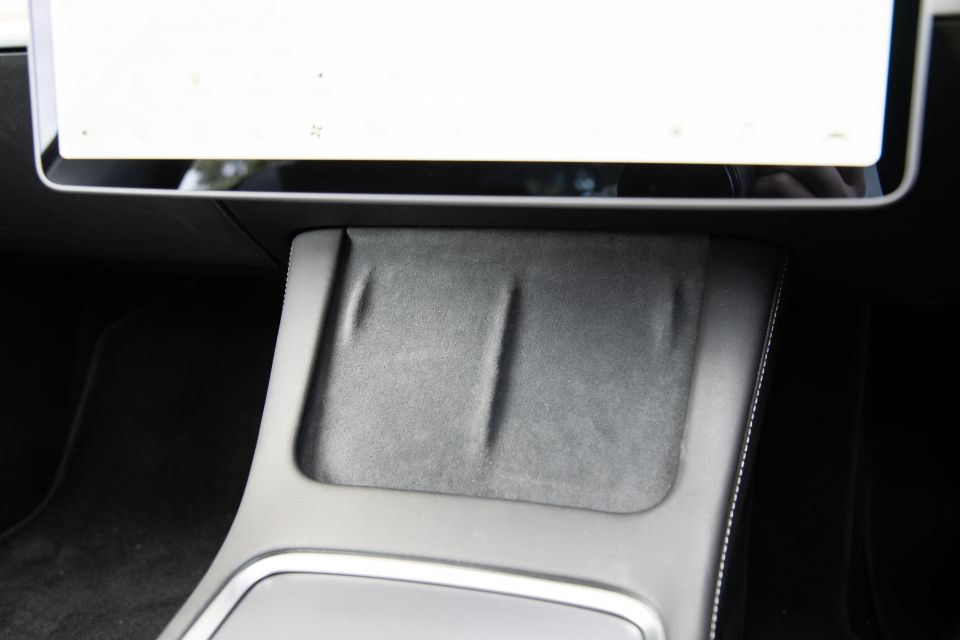
Tesla’s cabin design is minimalist in the extreme, but the display packs factory satellite navigation, a reversing camera, all-round parking sensors, FM radio, Bluetooth phone connectivity, and a box of tricks capable of keeping kids entertained for hours.
There’s no smartphone mirroring on hand, with Tesla instead backing its in-house software.
An update for 2021 brought dual wireless phone chargers under the dashboard and dual USB-C charge ports for rear passengers, along with matte trim for the tunnel between the driver and passenger, and a redesigned storage bin in front of the cupholders.
Stepping up to the Long Range gets you 19-inch alloy wheels, heated rear seats, a premium sound system, live traffic updates for the satellite navigation, Spotify and TuneIn radio streaming, LED fog lights, and floor mats.
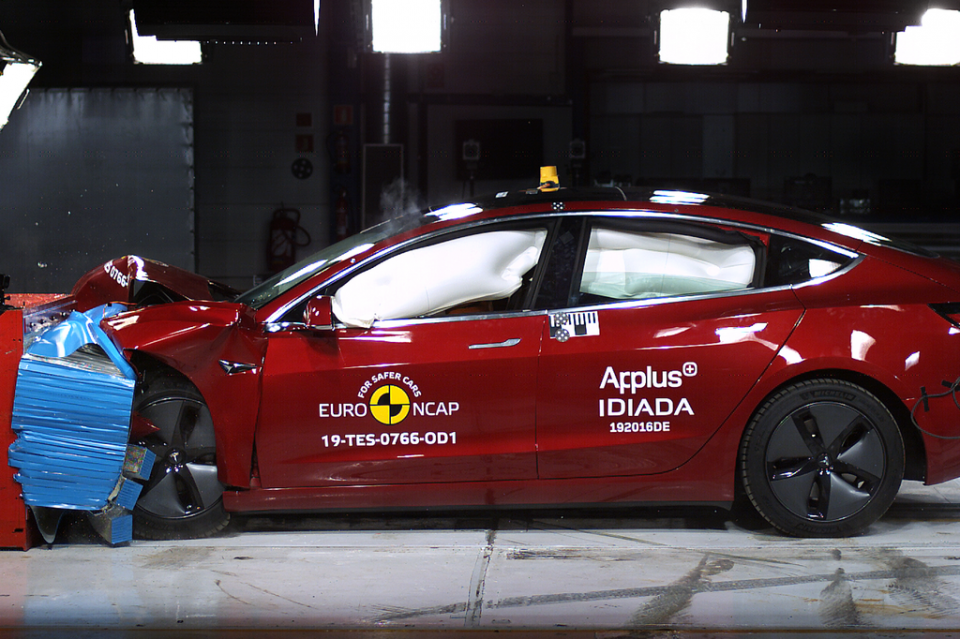
The Model 3 has a five-star safety rating from ANCAP, and has been lauded in the USA for its impressive crash performance.
It scored 96 per cent for adult occupant protection, 87 per cent for child occupant protection, 74 per cent for vulnerable road user protection, and 94 per cent for safety assist.
Standard safety equipment includes:
Although the Model 3 is capable of mapping its surrounding on its central screen and showing cars in your blind spot, it doesn’t have a conventional blind-spot monitoring system with lights in the mirrors.
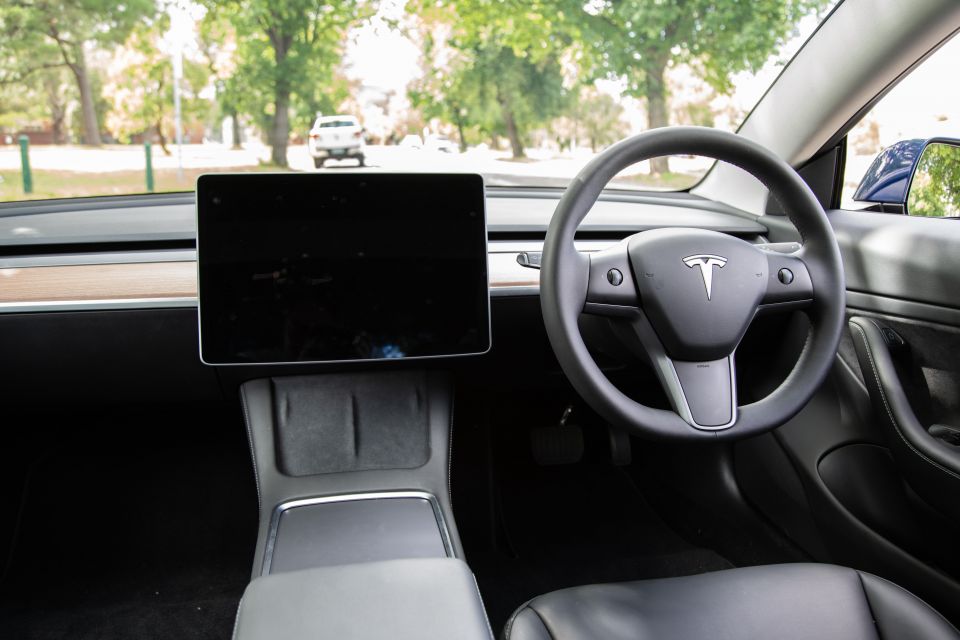
The Model 3 is like nothing else on the road, mostly in a good way.
With a short dashboard and ultra-low bonnet, not to mention the fact there’s no instrument binnacle in front of you, the view out the windscreen is panoramic.
Throw in the glass roof and low belt line, and you’ve got a cabin that’s bright and airy. The lack of any buttons or controls, even for the air vents, is jarring at first though.
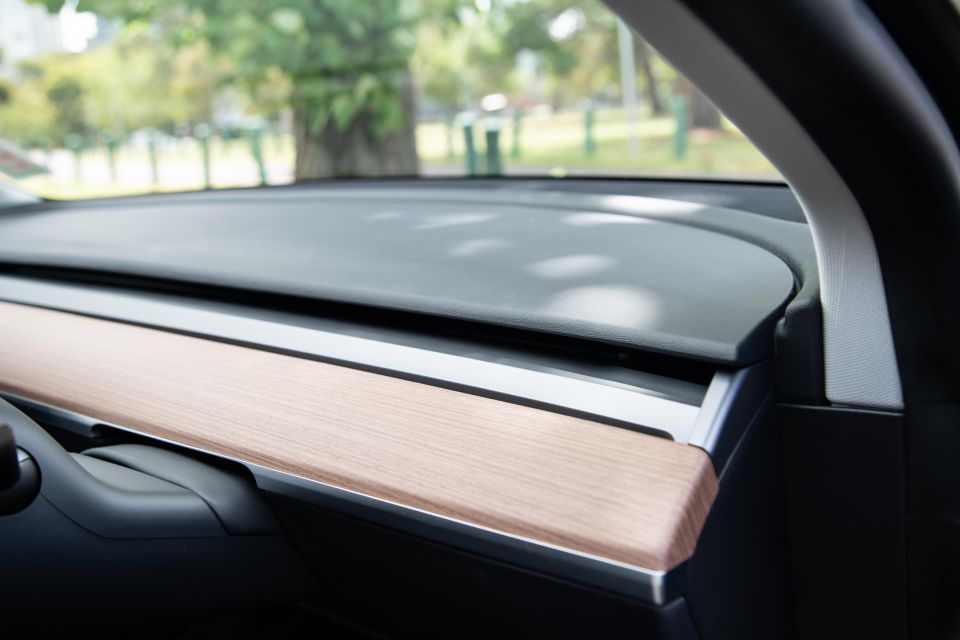
Everything in the Model 3 is managed through that monstrous central touchscreen, which looks like an iPad that’s been tacked onto the dashboard. Even the mirrors and steering wheel are adjusted through a sub-menu.
For the most part, the display is easy to use. Most of the things you poke and prod are shown prominently on the home page, so you don’t need to do too much flicking or scrolling to change radio station, adjust the temperature, or set a destination with the navigation.
The way the tiles slide around the screen and layer themselves is every bit as slick as you’d expect of a car aimed at early adopters and tech-savvy entrepreneurs.
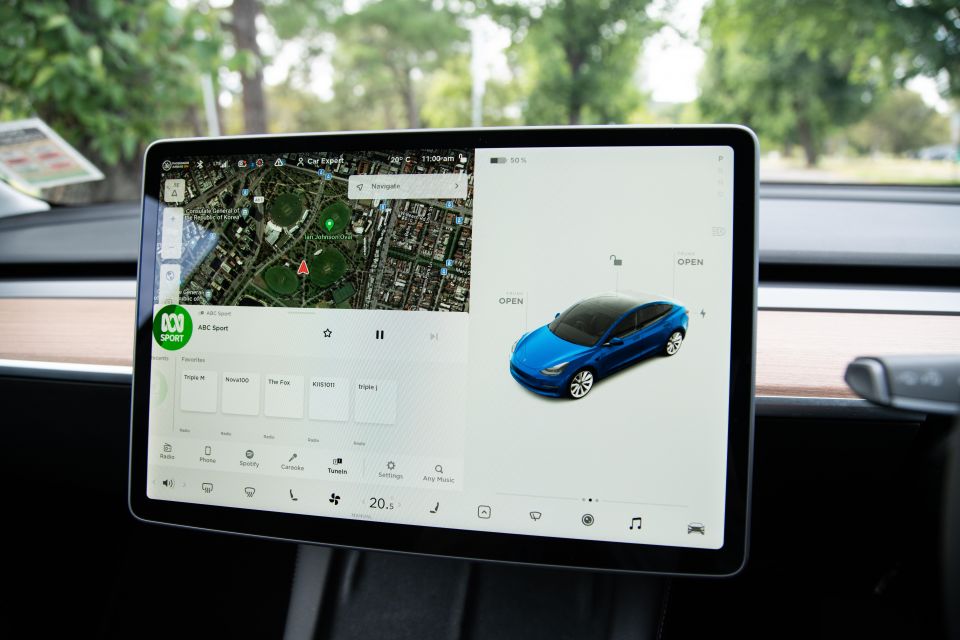
Okay, the speedometer is a bit smaller than it really should be, and the constant flickering of the car ‘visualising’ the world borders on distracting at times, but there really isn’t much to fault about the technology in the Model 3.
While we’re complaining, the push-button door handles need explaining to passengers, and the indicator stalk requires a firmer flick than you’d expect.
There’s more to the Tesla than just technology. The seats are supremely comfortable up front, and the driving position is nigh on perfect. The seat heaters are among the toastiest in the business, and once the air vents are set up right they blow at you from angles unimaginable in other cars.
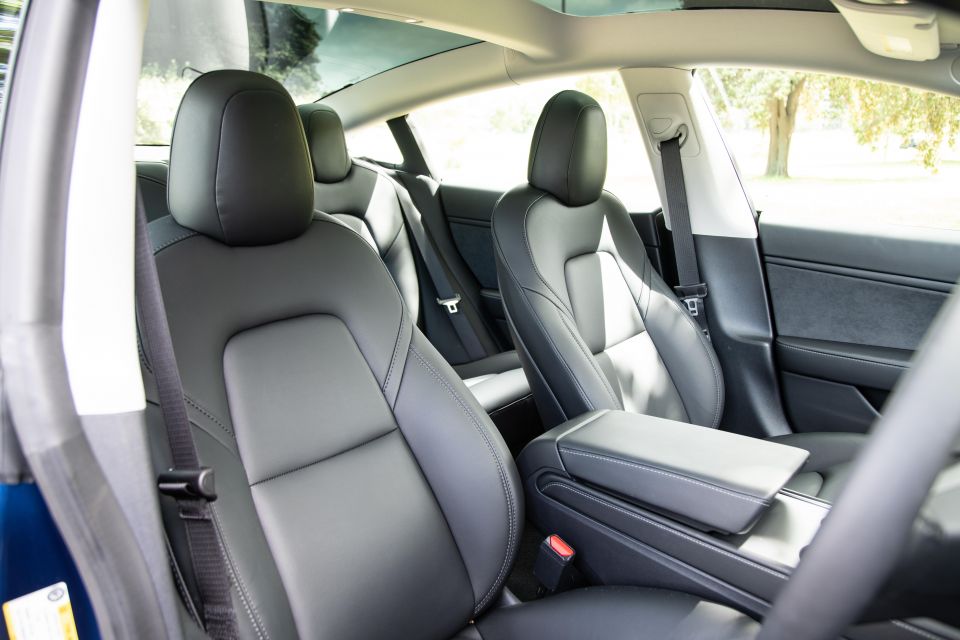
With no transmission in the central tunnel there’s acres of storage, and the dual wireless charger is an upgrade that’ll win favour with both drivers and passengers.
It’s worth mentioning nothing squeaked or rattled in our tester, all the trim pieces lined up properly, and all the materials felt of the quality you’d expect of an $85,000 luxury car.
It’s a shame the boot lid lining was so poorly fitted, and the paint behind the front doors was unfinished.
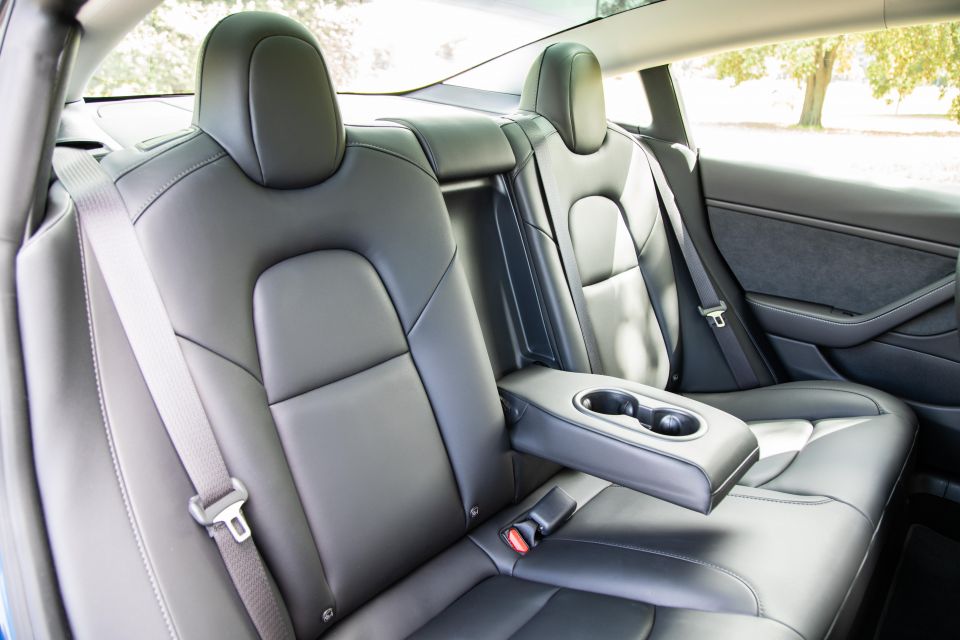
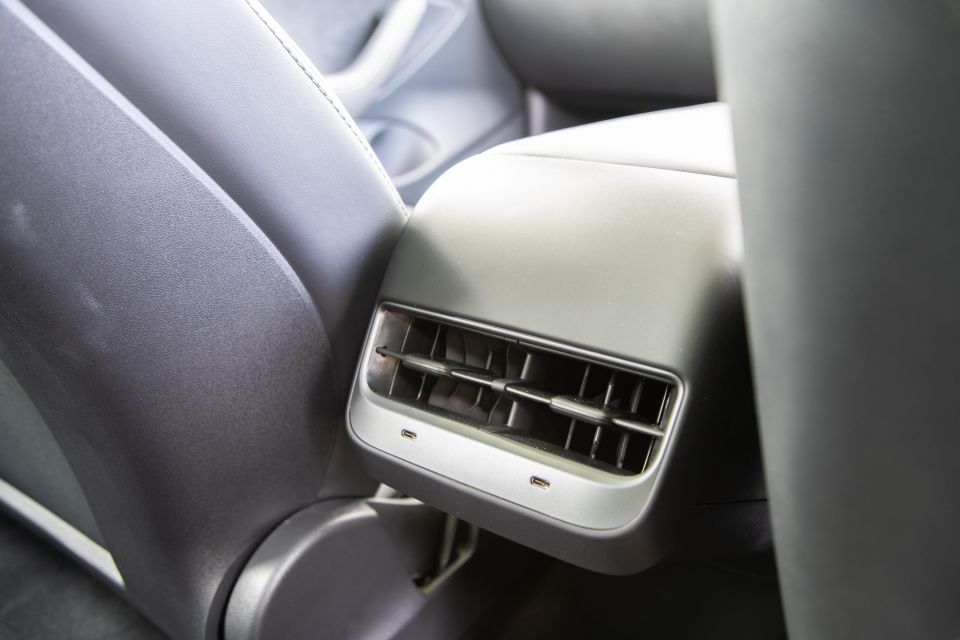
Rear seat space is slightly below what you’d expect from a 3 Series or C-Class. Legroom is average at best, and the bench is set low so longer-legged passengers end up with their knees around their chin.
There’s a fold-down armrest with cupholders between the seats, air vents, and USB-C charge ports on offer back there.
Boot space is 425L with the rear seats in place, and the powered tailgate is new for 2021. There’s a massive cubby beneath the boot’s false floor, but no spare wheel or repair kit.
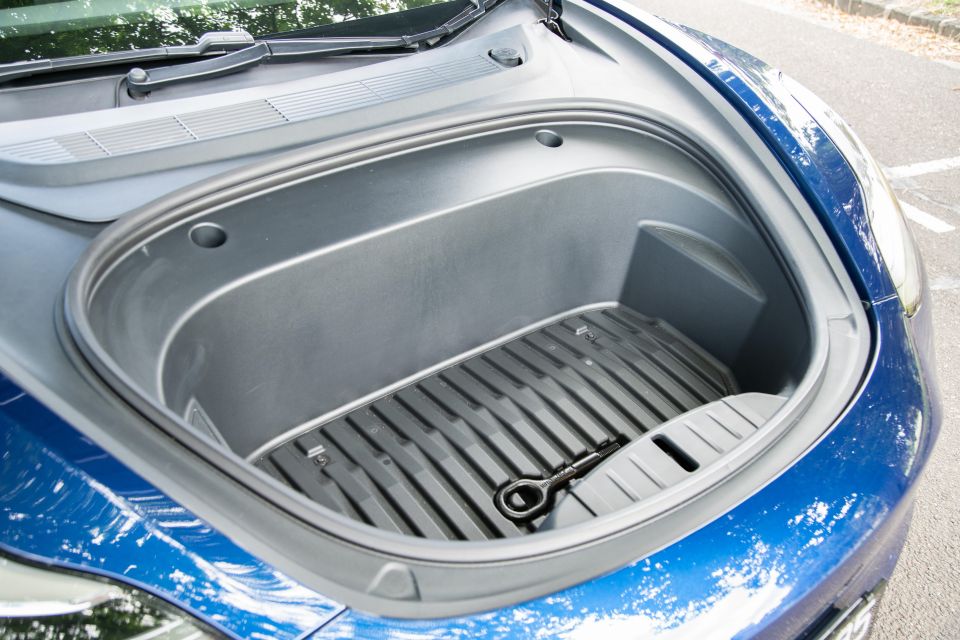
A storage space, if we’re being finicky.
Power in the Model 3 Long Range comes from a dual-motor electric powertrain with a combined 258kW, fed by a 79.5kWh lithium-ion battery pack.
Claimed range is 657km on the NEDC test cycle on the back of a recent update, and it will hit 100km/h in just 4.4 seconds from standstill.
Our average consumption during the week with the Model 3, including an extended stint on the highway, was 14.6kWh per 100km.
That’s good for a real-world range of around 550km.

The first thing that hits you is the sheer amount of torque available all the time.
Even though it isn’t technically the ‘fast’ one, the Model 3 Long Range is seriously fast, and it’s seriously fast at any (legal) speed.
It leaps off the mark with near-perfect all-wheel drive traction regardless of the weather, and the lack of gearshifts means the acceleration is unrelenting.
We marvel at how performance cars like the Golf R and Mercedes-AMG GLA45 S get off the line with launch control, but it’s hard to enjoy their chest-crushing acceleration off the mark in the real world.
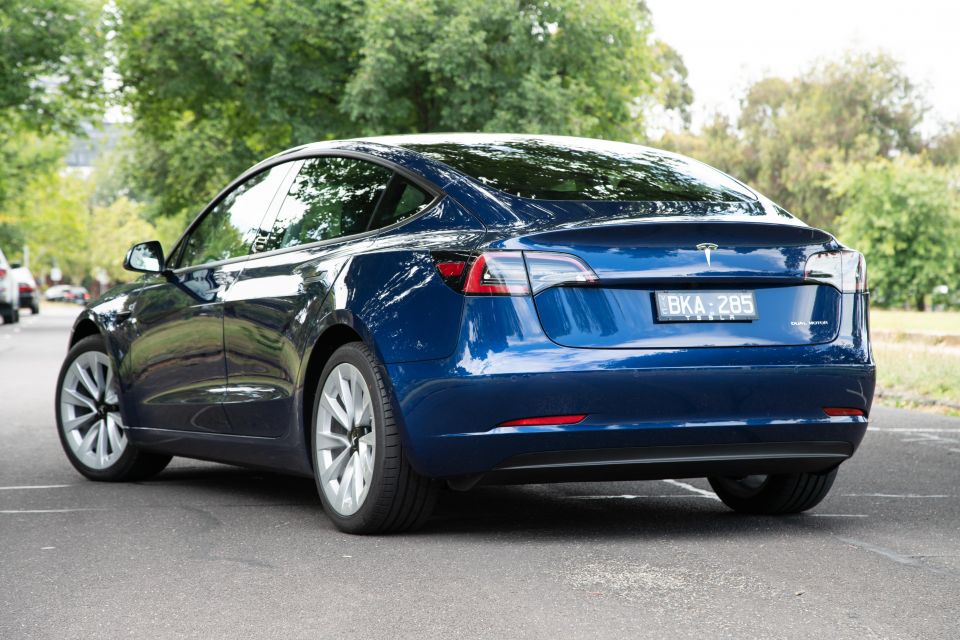
By the time you’ve flicked the car into the right mode, let the engine get into its sweet spot, and eventually lifted off the brake the traffic is long gone. It’s also antisocial to sit at the lights with the engine backfiring as it clatters into a rev limiter…
You don’t need to do any of that in the Model 3. You just stamp on the accelerator and it catapults you away in near silence. And this isn’t even the Performance model.
That sensation of endless, instantaneous performance doesn’t dissipate once you’re off the mark. Even up to the legal limit in Australia the Model 3 always has power in reserve, making it perfect for squirting into gaps in traffic or overtaking at highway speeds.
The way Tesla has tuned its motors puts everyone else in the shade, too.
Lean gently on the right-hand pedal and you wouldn’t have any idea it’s capable of hot-hatch-embarrassing acceleration, because the way the motors deliver their torque is so beautifully calibrated.
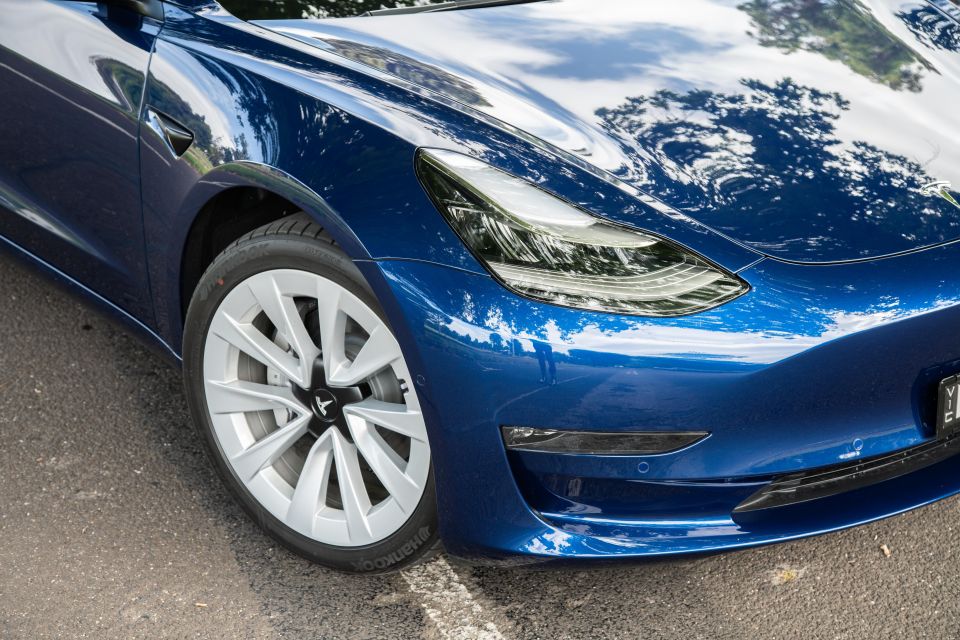
Where expert car reviews meet expert car buying – CarExpert gives you trusted advice, personalised service and real savings on your next new car.
Lift off the accelerator and the regenerative braking is the best-tuned system I’ve experienced. It takes some adjustment, but once you’re attuned to when you need to lift off the Model 3 can be driven around the city without ever touching the brake pedal.
It’s more than a straight line specialist, though. There’s real sophistication to the way it rides and handles.
With quick, weighty steering and a keen front end, the Model 3 has plenty to offer drivers who like to have a bit of fun.
There’s plenty of grip from the Hankook tyres, and the clever dual-motor all-wheel drive system allows you to use all the car’s torque essentially all the time.
If you aren’t a keen driver, the quick steering and smooth, quiet performance make it a brilliant way to sprint around the city. With no engine noise and minimal wind or tyre roar, it’s the quietest mid-sized sedan money can buy.
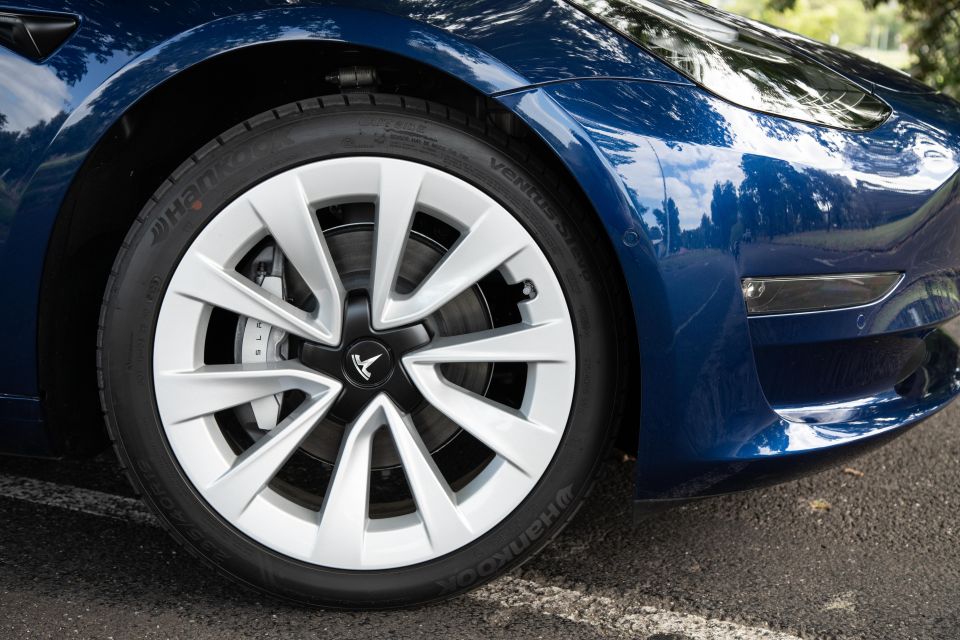
If you really aren’t keen on driving there’s the Autopilot suite, Tesla’s adaptive cruise and lane-keeping system.
Around a third of the 15.0-inch touchscreen is taken up by a ‘visualiser’ showing what the car sees, from road markings to the colour of traffic lights.
There’s no question the array of cameras and sensors scattered around the Model 3’s body are good at mapping its surroundings, because the visualiser is (usually) scarily accurate.
But the self-steering is no better than the system in the Mercedes-AMG GLA45 S we recently reviewed, and the adaptive cruise can occasionally be fooled into slowing down for trucks in parallel lanes.
Autopilot still feels like a generous name at best, and a misleading one at worst.
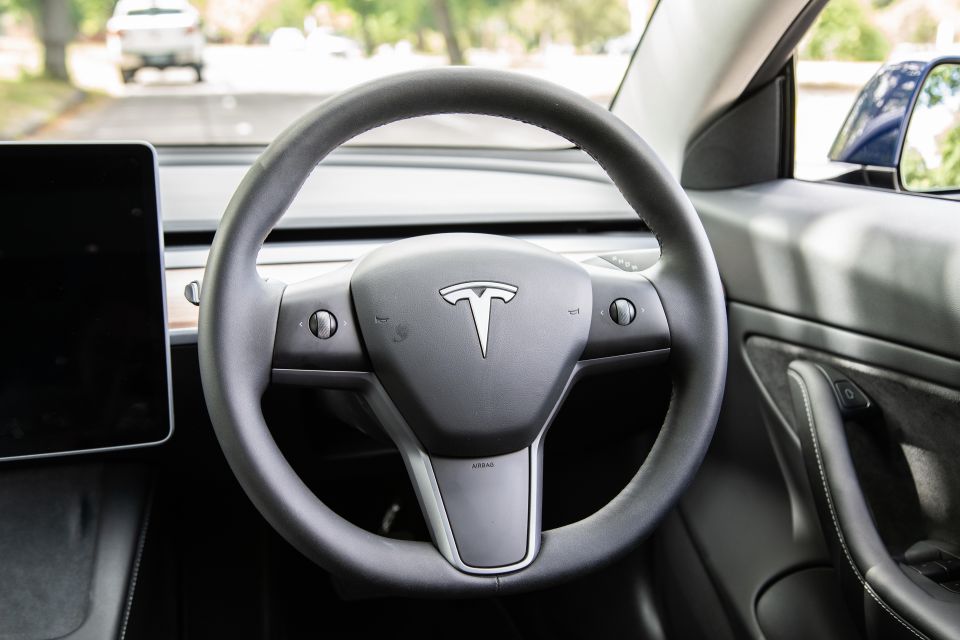
The ride errs on the sporty side, with tight body control to stop it rocking and rolling over dips and crests, but it’s also comfortable enough to make most of the worst city bumps fade into the background.
The other big question with any electric car is charging, but it proved a non-issue during our time. If you already live with an electric car bear with us here, we know it’s a non-issue once you’re part of the electric vehicle community.
First up, most owners charge their cars at home. The Model 3 can charge to a schedule so, provided you know when your power prices swap from on- to off-peak, you’re able to take advantage of cheaper electricity for a full battery.
When you’re on the move, Tesla has a network of around 50 DC fast charge locations dotted around the nation. I used the Supercharger station in Cremorne to juice up from 60 per cent to 100 per cent during a meeting.
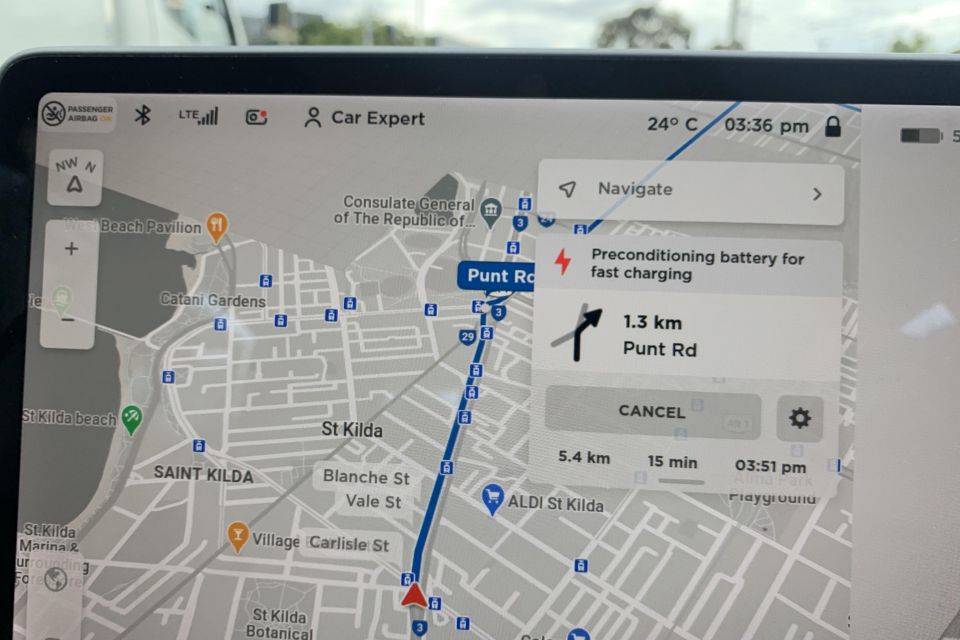
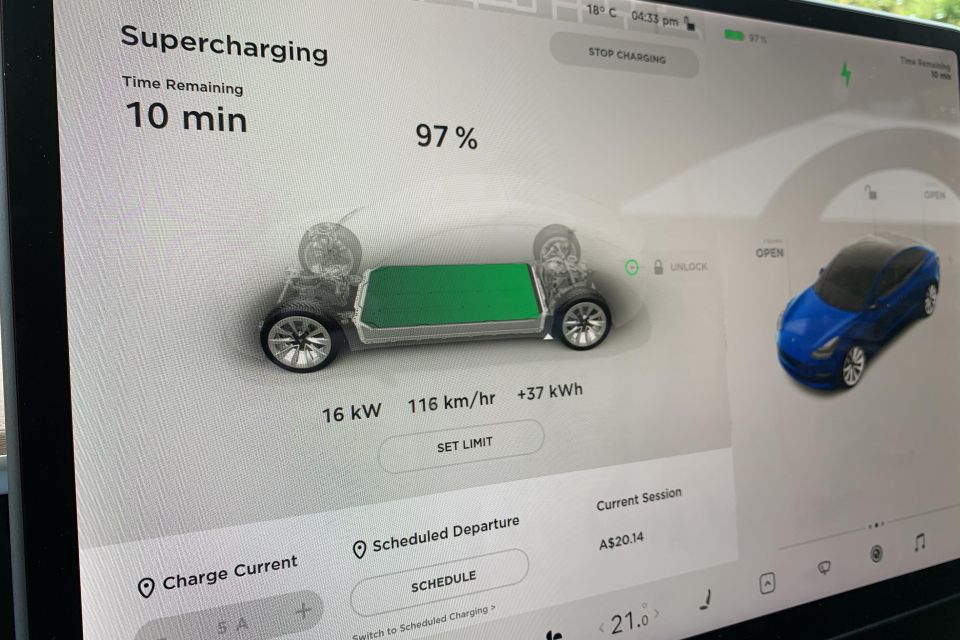
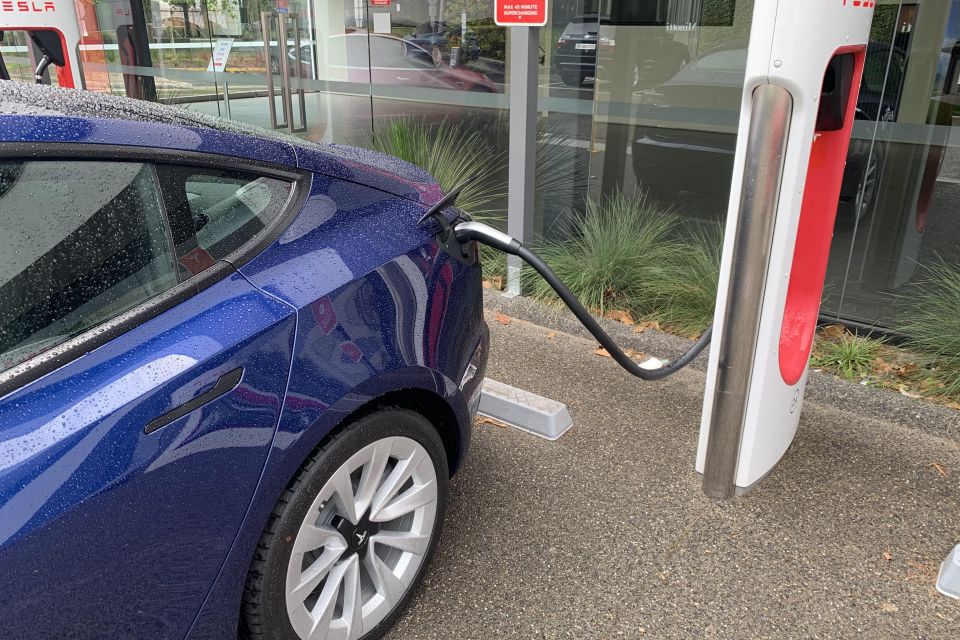
It took about 45 minutes, with a peak charge speed of 95kW (679km/h) while I sat in the car and caught up with the CarExpert team over video. Easy.
I then drove to Ballarat and, despite arriving with more than enough battery to get home comfortably, decided to put the local charge infrastructure through its paces.
Although Tesla does have a Supercharger nearby it was on the wrong side of town, so instead I headed to a Dan Murphy’s and hooked up to a Chargefox fast charger.
Rather than take up an ultra-rapid 350kW plug when I was in no hurry, I plugged the Model 3 into a 50kW charger and went to lunch. When I came back around 90 minutes later it was fully charged.
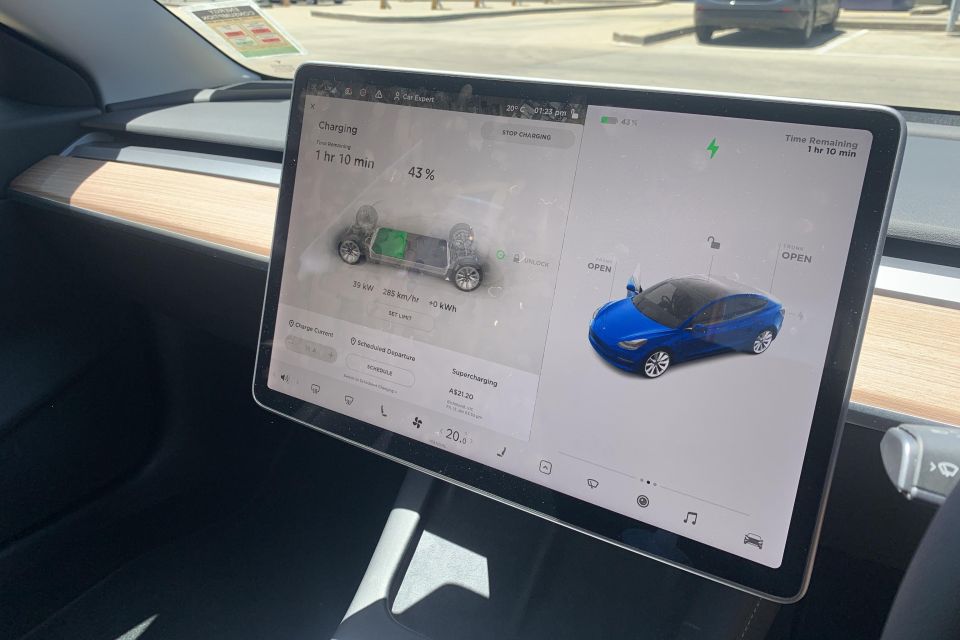
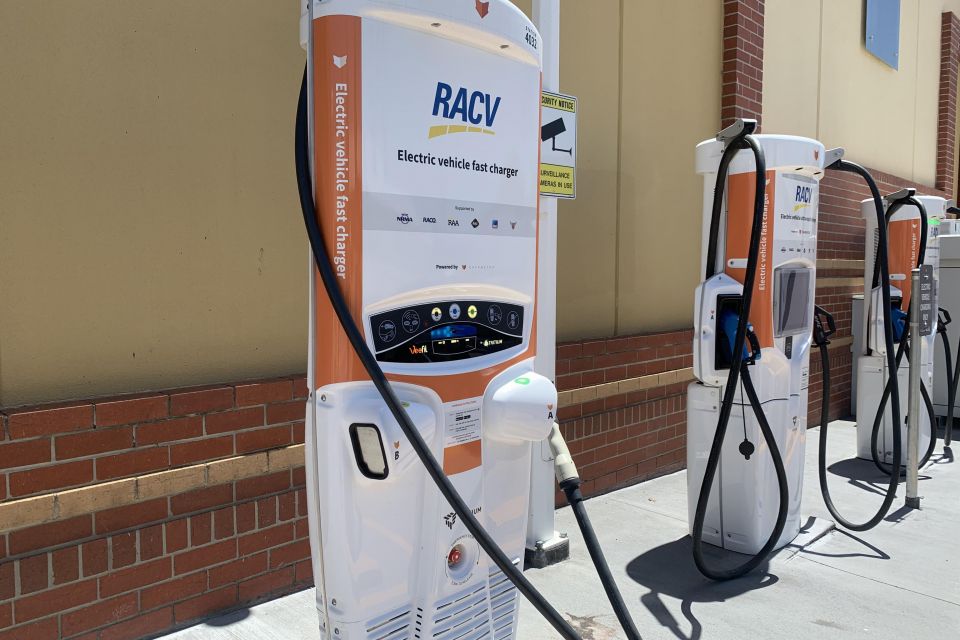
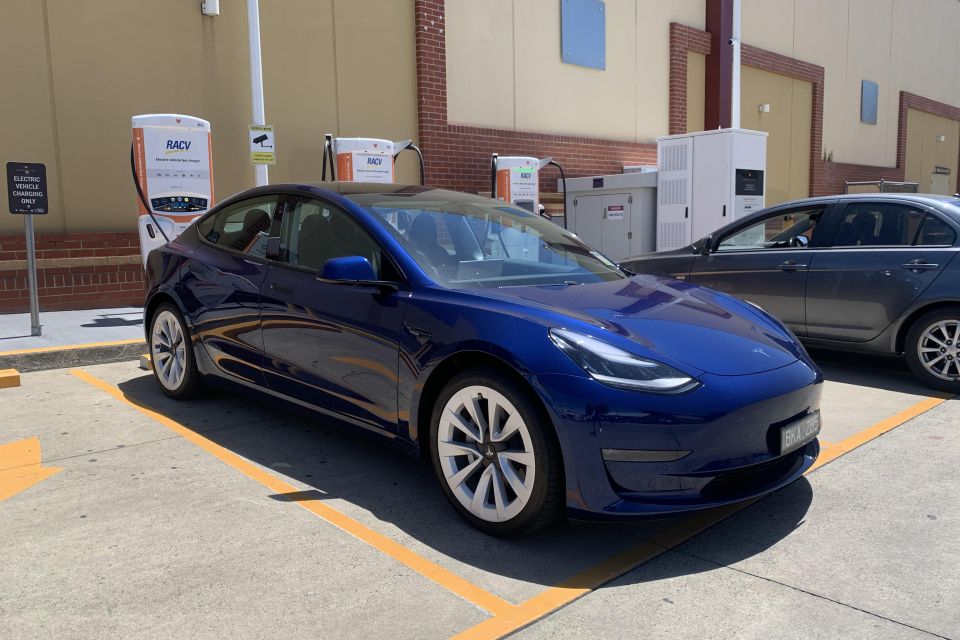
Given it has very few moving parts, there isn’t much maintenance required on the Model 3.
Tesla recommends having the air-conditioning filters changed every two years, and checking the tyre tread, balance, and rotation every 20,000km.
Thanks to regenerative braking, the brake pads and discs require work less frequently than in internal-combustion vehicles.
However, the Model 3 will need to have brake fluid checked every two years, and the pads and discs lubricated every 12 months in colder climates.
The Tesla Model 3 is arguably the best electric car on sale in Australia right now, and the Long Range is the sweet spot in the range.
It ticks all the boxes, for the early adopters Tesla has traditionally courted and for the sort of person who previously would’ve looked at something like a BMW 3 Series.
The cool factor is unquestionable, and the amount of technology and performance on offer is unmatched by anything even close to the price.
Forget about a good electric car, the Model 3 Long Range is an excellent mid-sized sedan. Full stop.
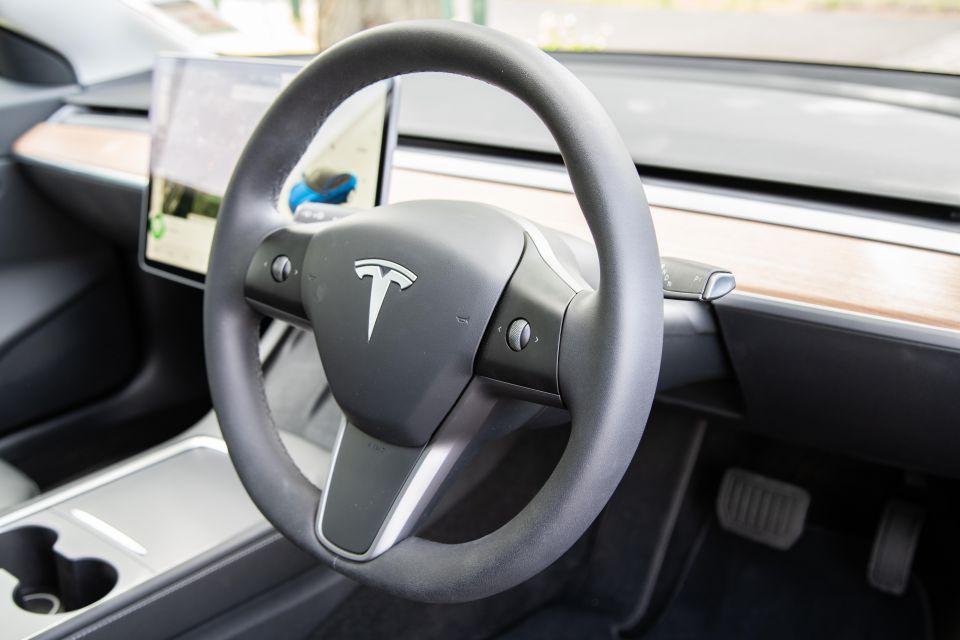
Click the images for the full gallery
Where expert car reviews meet expert car buying – CarExpert gives you trusted advice, personalised service and real savings on your next new car.
Scott Collie is an automotive journalist based in Melbourne, Australia. Scott studied journalism at RMIT University and, after a lifelong obsession with everything automotive, started covering the car industry shortly afterwards. He has a passion for travel, and is an avid Melbourne Demons supporter.


Ben Zachariah
24 Minutes Ago


Derek Fung
1 Day Ago


Damion Smy
3 Days Ago
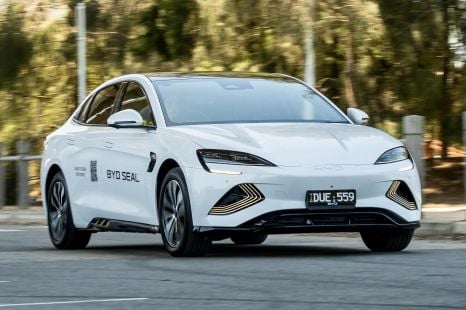

Max Davies
7 Days Ago
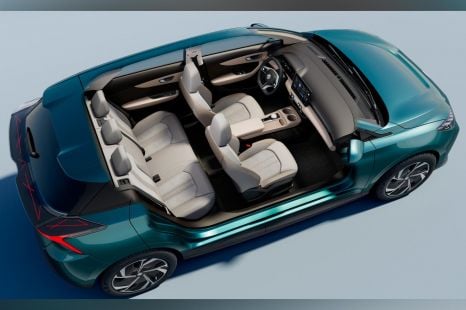

William Stopford
8 Days Ago
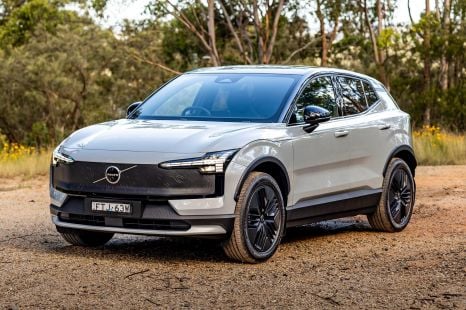

Matt Campbell
9 Days Ago